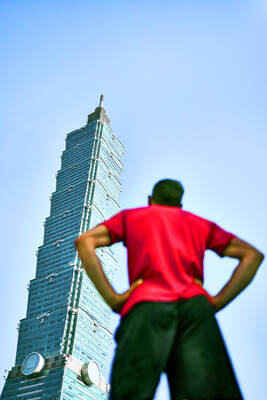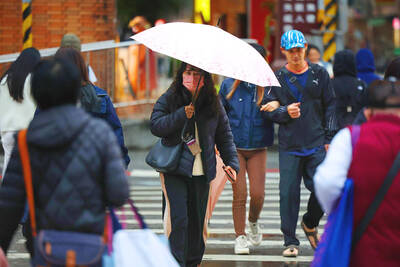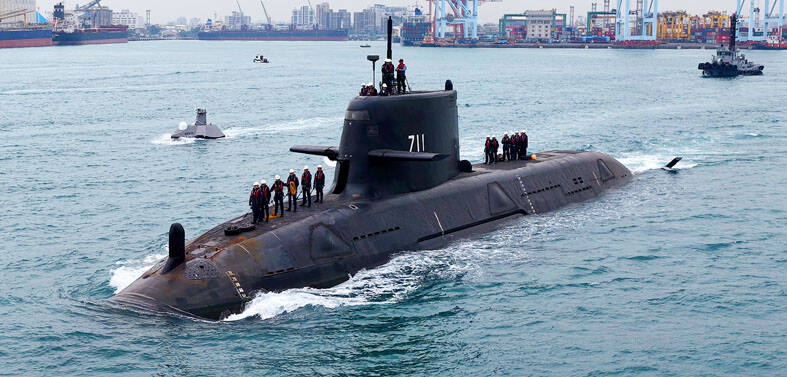Members of the legislature’s Social Welfare and Environmental Hygiene Committee yesterday urged the Environmental Protection Administration (EPA) to step up its efforts to curb water pollution and PM2.5 air pollution caused by petrochemical complexes.
PM2.5 is an indicator of fine particles less than 2.5 micrometers in diameter, a “Group 1” carcinogen listed by the WHO and a major air pollutant.
From October last year to last month, the central regions of Taichung and Changhua and Nantou counties had just 10 days when the PM2.5 index did not exceed level 6 — “intermediate” according to the administration’s Web site, Democratic Progressive Party (DPP) Legislator Liu Chien-kuo (劉建國) said during a committee meeting to discuss risks to the environment and public health caused by petrochemical complexes.
Highlighting the severity of the pollution, Liu said that the PM2.5 level in Yunlin County’s Douliou Township (斗六) in January last year was 54 micrograms per cubic meter of air (mg/m3) and the annual average reached 34.4mg/m3, compared with the annual PM2.5 standard of 15mg/m3 recommended by the administration.
He asked EPA Minister Wei Kuo-yen (魏國彥) what efforts are under way by the administration to counter PM2.5.
Wei said that a cap was set last year on the overall air pollution in the Kaohsiung-Pingtung air quality zone, which limits the maximum permissible amount of factories in the region.
In addition, an intergovernmental platform uniting central and local agencies, in particular central Taiwan and Yunlin, Chiayi and Tainan, has been established for all related agencies to update and streamline mitigation efforts, he said.
The administration would set up 10 survey stations at the sixth naphtha cracker, 10 in the Kaohsiung Linhai Industrial Park, eight in the Kaohsiung Linyuan Industrial Park and four in the Southern Taiwan Science Park this year to record the levels of PM2.5 and volatile organic compounds.
The administration is also improving monitoring efforts on PM2.5 caused by fugitive dust on riverbeds, fumes emitted by vehicles and activities such as burning ghost money and agricultural waste, he said.
DPP Legislator Tien Chiu-chin (田秋堇) said an investigation by the Yunlin County Government found more than 100 pollutants in the outflow from the sixth naphtha cracker, but just 24 were controlled by the administration.
She asked the administration to redouble monitoring efforts or the pollutants discharged into the water body will likely enter the food supply chain through freshwater fish, endangering public health.
Wei said that the administration needs some time to research possible pathways whereby the outstanding pollutants enter the food supply chain, and that it would ask local environmental protection agencies to monitor these pollutants.
He said that the administration would look into ways to include the unattended substances to its list of controlled pollutants from the petrochemical industry.

US climber Alex Honnold is to attempt to scale Taipei 101 without a rope and harness in a live Netflix special on Jan. 24, the streaming platform announced on Wednesday. Accounting for the time difference, the two-hour broadcast of Honnold’s climb, called Skyscraper Live, is to air on Jan. 23 in the US, Netflix said in a statement. Honnold, 40, was the first person ever to free solo climb the 900m El Capitan rock formation in Yosemite National Park — a feat that was recorded and later made into the 2018 documentary film Free Solo. Netflix previewed Skyscraper Live in October, after videos

NUMBERS IMBALANCE: More than 4 million Taiwanese have visited China this year, while only about half a million Chinese have visited here Beijing has yet to respond to Taiwan’s requests for negotiation over matters related to the recovery of cross-strait tourism, the Tourism Administration said yesterday. Taiwan’s tourism authority issued the statement after Chinese-language daily the China Times reported yesterday that the government’s policy of banning group tours to China does not stop Taiwanese from visiting the country. As of October, more than 4.2 million had traveled to China this year, exceeding last year. Beijing estimated the number of Taiwanese tourists in China could reach 4.5 million this year. By contrast, only 500,000 Chinese tourists are expected in Taiwan, the report said. The report

Temperatures are forecast to drop steadily as a continental cold air mass moves across Taiwan, with some areas also likely to see heavy rainfall, the Central Weather Administration (CWA) said. From today through early tomorrow, a cold air mass would keep temperatures low across central and northern Taiwan, and the eastern half of Taiwan proper, with isolated brief showers forecast along Keelung’s north coast, Taipei and New Taipei City’s mountainous areas and eastern Taiwan, it said. Lows of 11°C to 15°C are forecast in central and northern Taiwan, Yilan County, and the outlying Kinmen and Lienchiang (Matsu) counties, and 14°C to 17°C

STEERING FAILURE: The first boat of its class is experiencing teething issues as it readies for acceptance by the navy, according to a recent story about rudder failure The Hai Kun (海鯤), the nation’s first locally built submarine, allegedly suffered a total failure of stern hydraulic systems during the second round of sea acceptance trials on June 26, and sailors were forced to manually operate the X-rudder to turn the submarine and return to port, news Web site Mirror Daily reported yesterday. The report said that tugboats following the Hai Kun assisted the submarine in avoiding collisions with other ships due to the X-rudder malfunctioning. At the time of the report, the submarine had completed its trials and was scheduled to begin diving and surfacing tests in shallow areas. The X-rudder,